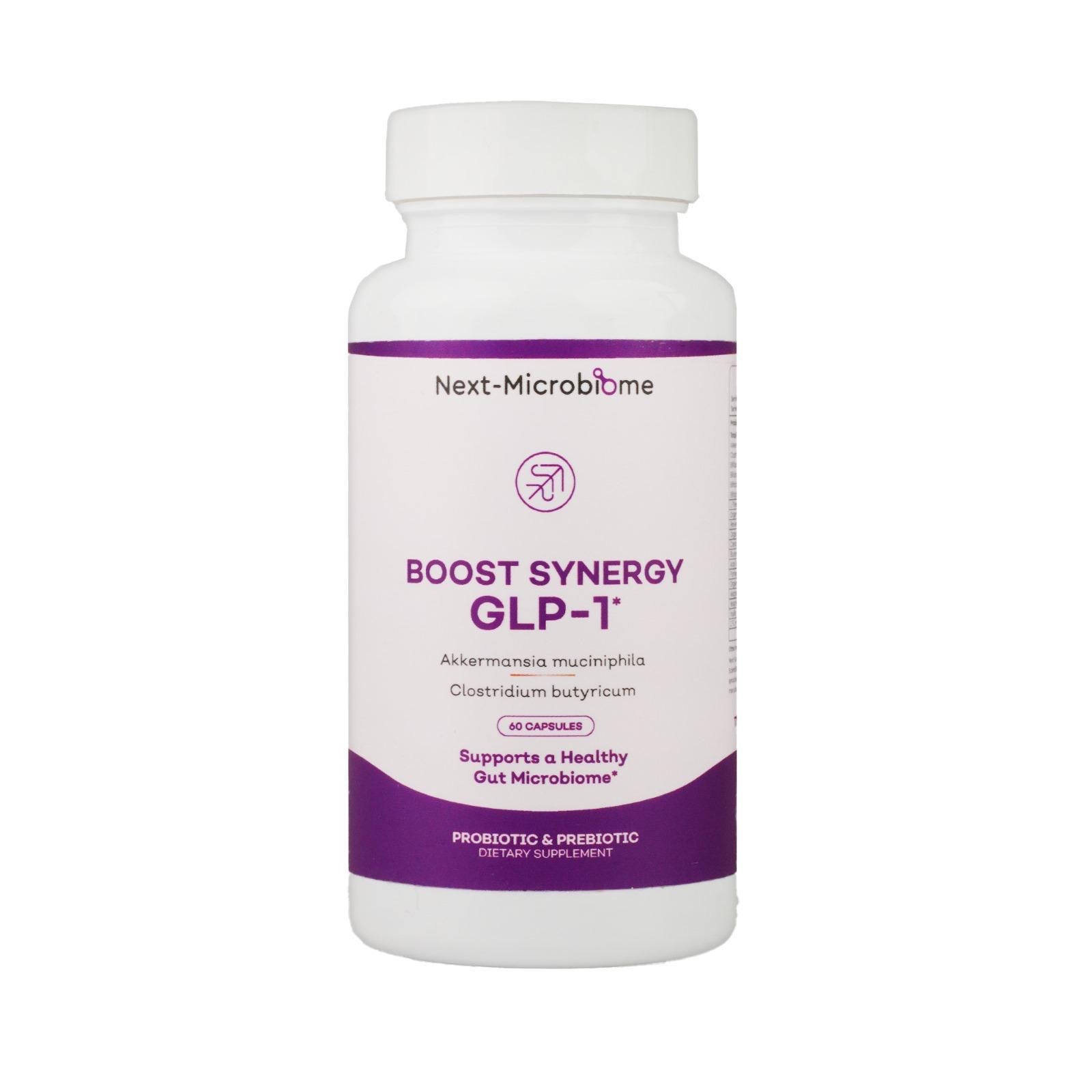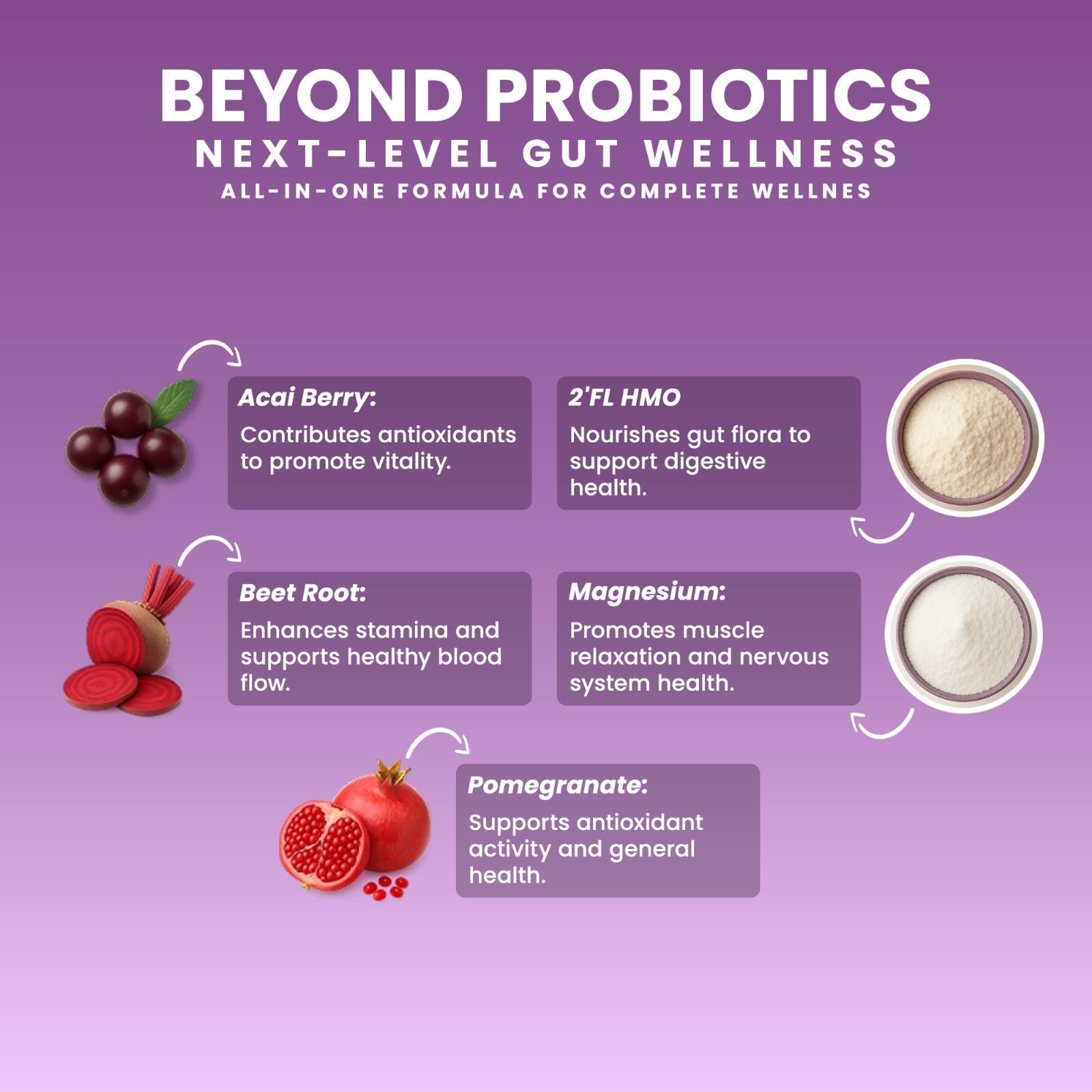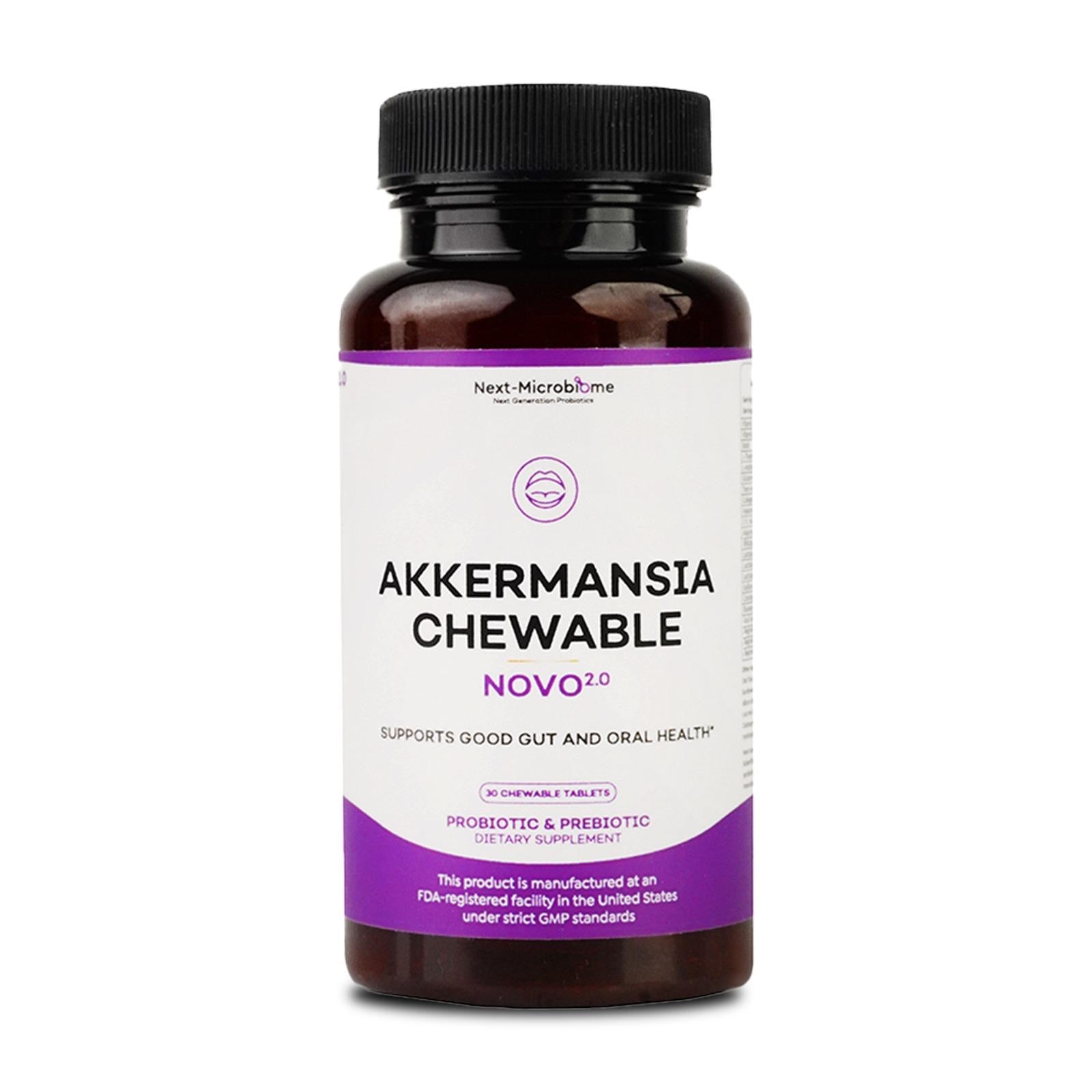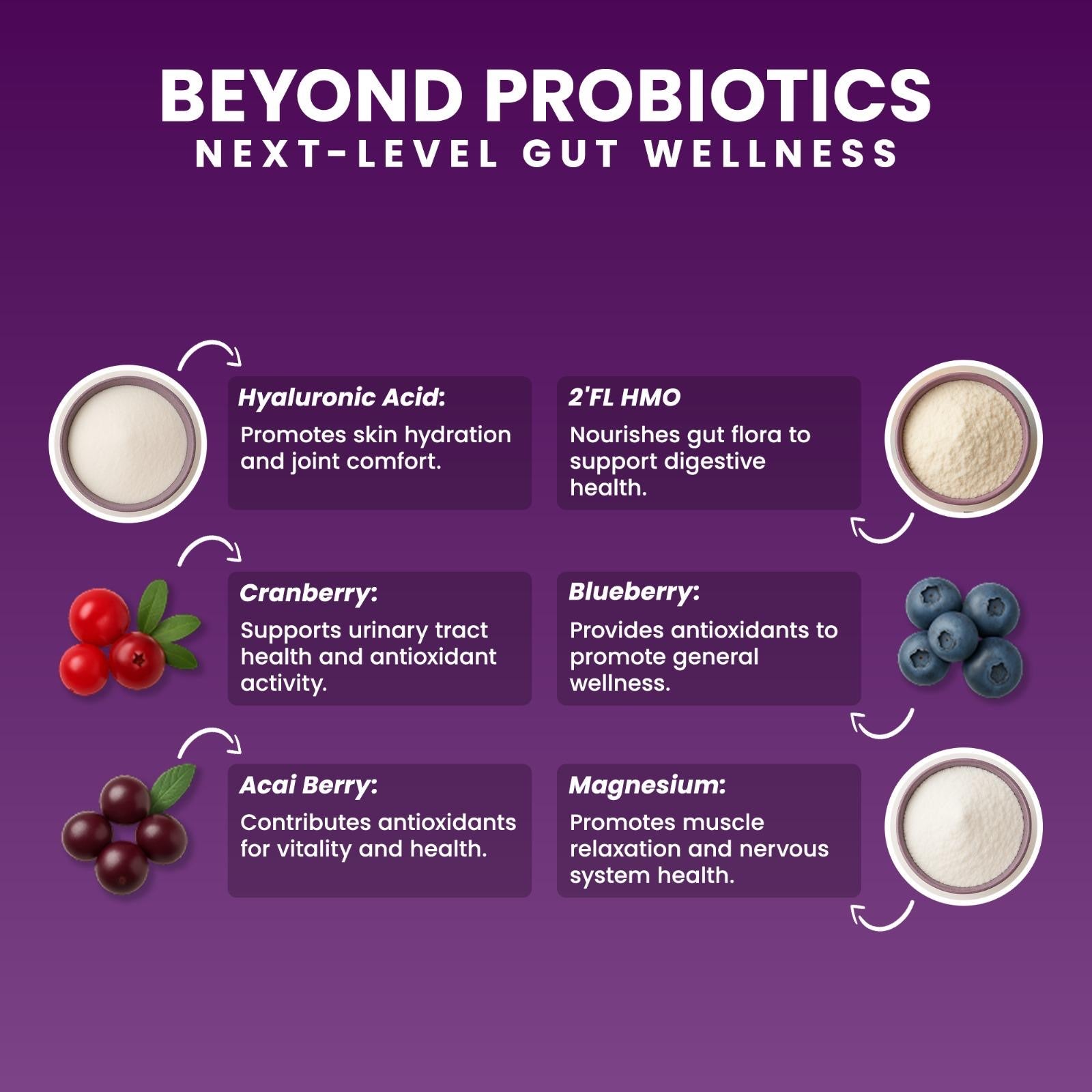
How Modern Diets Harm Kids’ Gut Health | Chewable Akkermansia
Antibiotics, Sugar, and Processed Foods — How Modern Diets Damage Kids’ Microbiota
Walk into any supermarket and you’ll find shelves lined with “kid-friendly” foods: colorful cereals, yogurts packed with sugar, gummy vitamins, and snack bars claiming to be healthy. Yet behind those bright labels hides one of the quietest biological crises of our time — the destruction of children’s microbiota.
Inside every child lives a living ecosystem made of trillions of microorganisms. Among them, Akkermansia muciniphila acts as a protective architect of the gut barrier. But today’s lifestyle — from frequent antibiotic use to diets dominated by refined carbohydrates — is dismantling that ecosystem faster than nature can repair it.
The Microbiome Under Siege
Children’s microbiota are supposed to be diverse jungles of microbes, each playing a unique role in digestion, immunity, and even mental well-being. But that diversity is shrinking.
The three biggest disruptors are:
-
Antibiotics — lifesaving when needed, but devastating when overused. Even one course can dramatically reduce Akkermansia levels.
-
Refined Sugar — feeds opportunistic bacteria that produce inflammation and suppress beneficial species.
-
Ultra-Processed Foods — stripped of fiber, antioxidants, and natural prebiotics, they leave the gut starving for the nutrients that good bacteria need to thrive.
When these factors collide, the gut’s mucin layer thins — and Akkermansia, which depends on that mucin, begins to disappear. The result is a leaky gut, inflamed immune responses, and metabolic stress that can ripple through a child’s entire body.

How Antibiotics Alter the Microbial Landscape
Antibiotics can’t distinguish friend from foe. Along with killing harmful bacteria, they also eliminate key residents that maintain microbial balance.
Studies show that even months after a typical antibiotic course, many children’s microbiota fail to fully recover. Akkermansia muciniphila — one of the most sensitive species — often takes the longest to return, if it returns at all.
This loss doesn’t just affect digestion. It weakens immune education, increases allergic responses, and leaves the gut wall more permeable to toxins. Over time, repeated antibiotic exposure may even influence metabolism, paving the way for insulin resistance or obesity later in life.
Sugar: The Silent Microbial Predator
While antibiotics wipe the microbiome in one blow, sugar slowly starves it of diversity.
High-sugar diets reduce the abundance of beneficial bacteria that ferment fiber into short-chain fatty acids — the molecules that fuel intestinal cells and calm inflammation.
Meanwhile, sugar-loving microbes flourish, producing acids that irritate the gut lining and lower Akkermansia populations.
For children, this microbial imbalance can translate into energy crashes, mood swings, and increased susceptibility to infections — not to mention a weakened metabolic foundation for the future.
Processed Foods and the Missing Fiber Revolution
Modern packaged foods are engineered for taste and shelf life, not microbial health.
They often lack the fibers, polyphenols, and natural antioxidants that Akkermansia depends on. Without this nourishment, the mucin layer — the bacterium’s home — thins out, compromising the intestinal barrier and triggering inflammation.
Even “healthy-looking” snacks marketed to kids are often ultra-processed. The absence of plant-based diversity leaves little room for Akkermansia or its microbial allies to thrive.
Restoring Balance: How to Protect Kids’ Microbiota
The good news? The microbiome is resilient — especially in children. With the right habits, Akkermansia can be restored.
Here’s how parents can help rebuild what modern diets have damaged:
-
Rebuild with whole foods. Fill plates with fruits, vegetables, legumes, and whole grains — all rich in fiber and polyphenols.
-
Add variety every week. Different plants feed different microbes; aim for 20–30 plant types weekly.
-
Reduce added sugars. Replace sodas and candy with berries, dates, or dark chocolate snacks.
-
Use antibiotics only when essential. Always consult your doctor about necessity and post-antibiotic recovery support.
-
Reinforce with targeted probiotics. Use next-generation strains that include or support Akkermansia muciniphila.

The Role of Chewable Akkermansia in Recovery
Next-Microbiome Chewable Akkermansia was designed to help rebuild microbial balance disrupted by modern diets and antibiotic exposure.
Unlike ordinary probiotics that struggle to survive stomach acid, Chewable Akkermansia provides stabilized bioactive components that nourish the gut barrier and help Akkermansia flourish again.
By combining plant-based prebiotics, polyphenols, and supportive probiotic strains, it supports natural mucin renewal and strengthens gut integrity — giving children’s microbiota the resilience it was meant to have.
👉 Learn more about Chewable Akkermansia.
Protecting the Next Generation
Every snack, every spoonful of sugar, every unnecessary antibiotic leaves a microbial footprint.
But with awareness, nutrition, and science-driven support, we can reverse the damage — one meal and one microbe at a time.
A child’s microbiota is not just a digestive system; it’s their lifelong immune, metabolic, and emotional foundation.
Protecting Akkermansia today means protecting their future tomorrow.
Links
-
Main Blog: Akkermansia for Kids — Building a Stronger Microbiome
-
Previous Blog: How a Healthy Microbiome Shapes Learning, Mood, and Focus in Children
-
External Scientific Source — review on Akkermansia’s role in microbial barrier and immune recovery
Written by Ali Rıza Akın
Microbiome Scientist, Author & Founder of Next-Microbiome
Ali Rıza Akın is a microbiome scientist with nearly 30 years of biotechnology and translational research experience in Silicon Valley. He is the discoverer of Christensenella californii, a novel human-associated bacterial species linked to metabolic health and mucosal integrity.
His scientific work spans:
-
mucosal immunology
-
gut barrier biology
-
oral–gut microbiome interactions
-
SCFA metabolism
-
next-generation probiotics (Akkermansia, Christensenella, Clostridium butyricum)
-
host–microbe signaling
-
microbial therapeutics
He is the author of Bakterin Kadar Yaşa: İçimizdeki Evren (Live as Long as Your Bacteria) and a contributor to Bacterial Therapy of Cancer: Methods and Protocols (Springer, Methods in Molecular Biology).
As Founder of Next-Microbiome, Ali develops advanced synbiotic formulations — including the industry’s first chewable Akkermansia-supporting synbiotic — designed to strengthen the gut lining, support metabolic resilience, enhance mucosal immunity, and harmonize the oral–gut microbiome axis.











